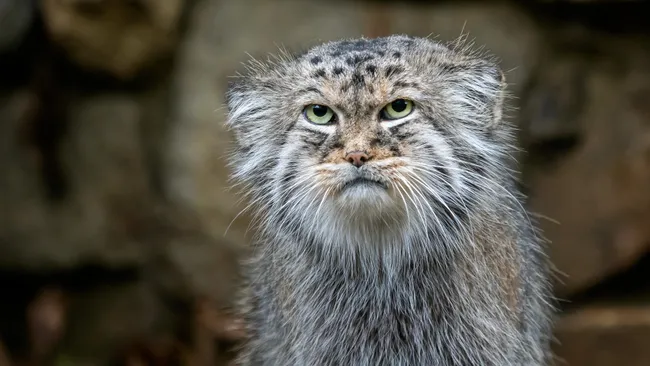Pallas’s cat is a small wild cat native to Central Asia with short legs and dense fur, making it look bigger than it really is — but the yelps it makes in stressful situations betray its size.
The Pallas’s cat, or manul, is a small wild feline native to Central Asia. Known for its dog-like yelps and unusually short legs, it often appears clumsy when chasing prey. Scientists believe it is one of the most ancient cat species still in existence, branching off from a leopard ancestor roughly 5.2 million years ago.
Though its fluffy, dense coat makes it look bigger, the Pallas’s cat is actually close in size to a typical house cat. That thick fur, however, is essential for survival in the freezing steppes and high-altitude grasslands it inhabits. Elusive and solitary, the species spends its days hidden in rocky crevices or abandoned marmot dens, making it a rare sight in the wild.
As a nocturnal hunter, it emerges at twilight and remains active until dawn. It relies heavily on ambush, often waiting outside rodent burrows for prey to surface — though some individuals have been observed reaching inside to grab a meal. Its coat, which shifts from gray to sandy tones with the seasons, helps it blend perfectly into the landscape. The white-tipped hairs give it a frosted look, making it nearly invisible among rocks and shrubs. Adding to its stealth, the cat’s low-set rounded ears allow it to peer over stones without being detected. Its only giveaway is a thick, bushy tail, about half the length of its body.
Unlike most small wildcats, which have vertical slit pupils, Pallas’s cats have round pupils that aid in depth perception. They also make an unusual yelping sound when startled or excited, resembling a small dog — though they can still purr and growl like other felines.
In their natural habitat, these cats usually live eight to nine years. Despite their size, they maintain surprisingly large territories, spanning 9 to 18 square kilometers (3.5 to 7 square miles), marked with scent. One quirky behavior often observed is that they warm their paws by standing on their own tail. Whether this explains their famously grumpy expression remains a mystery.
